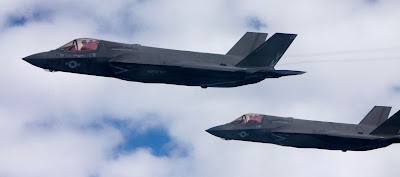X-35 Joint Strike Fighter F-35. Public Domain ClipArt Stock Photos and Images. For the U.S. Navy, the JSF will be used in a "first day" of war, as a survivable strike fighter aircraft to complement F/A-18E/F. The U.S. Air Force will employ it as a multirole aircraft, primary-air-to-ground, which will replace the F-16 and A-10 and to complement the F-22. The Marine Corps will use the Short Takeoff and Vertical Landing (STOVL) variant of the aircraft to replace the AV-8B and F/A-18A/C/D. The United Kingdom's Royal Navy and Royal Air Force multirole aircraft will replace the Sea Harrier and GR7.
What is commonly known today as the F-35 Joint Strike Fighter Program had its origination in several programs from the 1980s and early 1990s.
Over the years, several tactical aircraft acquisition programs have attempted to deliver new warfighting capabilities to the U.S. Air Force, Navy, Marine Corps and our close allies. Most of those programs failed while the JSF program excelled.
The experience gained from previous programs has made JSF what it is today, the world's foremost stealthy, supersonic, survivable, lethal, supportable and affordable multi-role fighter.
F-35A Lightning IIs from the 58th Fighter Squadron, 33rd Fighter Wing, Eglin AFB, Fla., perform an aerial refueling mission May 14, 2013, off the coast of northwest Florida. The 33rd Fighter Wing is a joint graduate flying and maintenance training wing that trains Air Force, Marine, Navy and international partner operators and maintainers of the F-35 Lightning II. (U.S. Air Force photo/Master Sgt. Donald R. Allen)
F-35B Joint Strike Fighters with Marine Fighter Attack Training Squadron 501 conduct aerial refueler training with a KC-130J Hercules with Marine Aerial Refueler Transport Squadron 252 Oct. 2in the sky near Eglin Air Force Base, Fla. It was the first time an operational Joint Strike Fighter had conducted air-to-air refueling. (Photo by Cpl. Brian Adam Jones)


















No comments:
Post a Comment